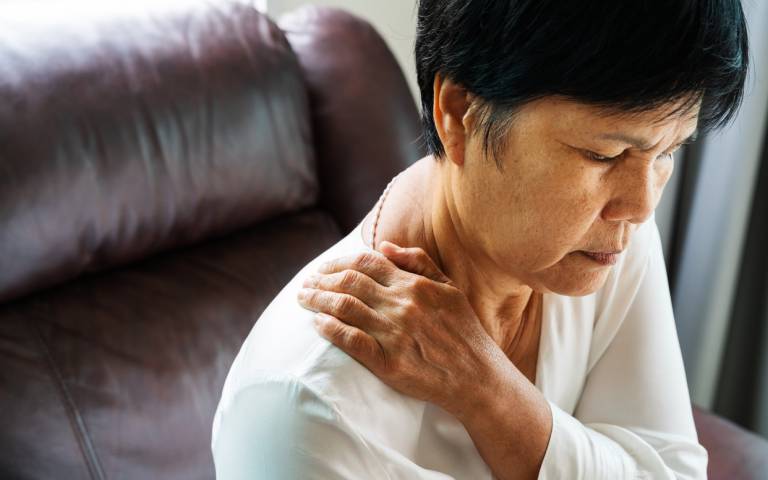Middle-aged and older adults who experience physical pain show signs of worsening depression up to eight years before the pain begins, according to new research that reveals a surprising timeline in how these conditions interact. The findings suggest that early mental health support might help prevent or reduce future pain problems.
The study, published May 20 in eClinicalMedicine by University College London researchers, tracked over 7,300 adults aged 50+ for up to 21 years, revealing patterns that could change how we think about treating both pain and depression.
“Our study shows that depressive symptoms and loneliness worsen long before pain begins. This is important as it suggests the potential for early mental health and social support to reduce or delay later pain,” said Dr. Mikaela Bloomberg from UCL Epidemiology & Public Health, who led the research.
The Depression-Pain Connection Timeline
By analyzing data from the English Longitudinal Study of Ageing, researchers compared 3,668 adults who reported moderate to severe pain with an equal number who didn’t experience similar pain.
What they discovered challenges common assumptions about pain and mental health. Depression symptoms weren’t just a consequence of living with pain – they actually preceded it by years.
The research team found that depression scores rose sharply in the years leading up to pain onset, peaked when pain began, and then remained elevated. Meanwhile, people without pain maintained relatively stable mental health throughout the study period.
A similar pattern emerged for feelings of loneliness, which gradually increased before pain began and continued rising afterward. This suggests a complex relationship that goes beyond pain simply causing social withdrawal.
How Might Mental Health Trigger Physical Pain?
The mind-body connection in pain development appears stronger than previously recognized. According to the researchers, several mechanisms might explain how depression and loneliness contribute to physical pain:
- Psychological stress increases inflammation, which can lead to pain
- Depression and loneliness may change immune responses
- Mental distress can dysregulate the autonomic nervous system
- These factors may increase sensitivity to pain signals
“Factors such as depression and loneliness can contribute to pain through several mechanisms. By inducing stress, they may increase inflammation, which can lead to pain. They also may increase sensitivity to pain by changing immune responses and by dysregulating our autonomic nervous system,” Dr. Bloomberg explained.
Not All Social Factors Are Equal
Interestingly, while loneliness (the subjective feeling of lacking connection) predicted pain, social isolation (the objective measure of social contact) didn’t show the same relationship. This distinction suggests that how connected we feel matters more than how many social interactions we have.
The finding challenges conventional advice to simply “get out more” and indicates that the quality of relationships may be more important than quantity when it comes to pain prevention.
Most participants in the pain group reported back, knee, hip, or foot pain – areas commonly affected by age-related conditions. Though the study didn’t identify specific pain causes, the patterns remained consistent.
Socioeconomic Factors Make a Difference
The research revealed that people with less education and wealth experienced more severe depression increases before pain onset. This inequality suggests that those with fewer resources may have limited access to mental health support that could potentially prevent pain problems.
These disparities highlight the need for accessible mental health services for vulnerable populations. The researchers suggest that targeted community support programs could help address this gap.
Implications for Pain Management
This study’s findings have significant implications for how we approach pain treatment. The traditional model often focuses on addressing pain after it appears, but this evidence suggests earlier intervention could be key.
- Mental health screening could identify those at higher risk for developing pain
- Depression treatment might serve as pain prevention
- Addressing feelings of loneliness could reduce future pain burden
- Integrating mental health support into primary care could yield multiple benefits
“Our findings highlight the importance of approaching pain not just from a biological perspective. Mental health interventions may be important too,” Dr. Bloomberg noted.
Looking Forward
While the study primarily included white participants (reflecting England’s older adult population during the study period), the researchers call for expanded research in younger and more diverse populations.
Could addressing depression and loneliness early be the key to reducing the burden of chronic pain as we age? The evidence increasingly suggests so. As our understanding of the mind-body connection deepens, treating the whole person – not just their physical symptoms – becomes even more essential.
For the millions of people struggling with chronic pain, this research offers a new perspective: the road to relief might begin with addressing mental wellbeing long before the pain itself appears.
If our reporting has informed or inspired you, please consider making a donation. Every contribution, no matter the size, empowers us to continue delivering accurate, engaging, and trustworthy science and medical news. Independent journalism requires time, effort, and resources—your support ensures we can keep uncovering the stories that matter most to you.
Join us in making knowledge accessible and impactful. Thank you for standing with us!

